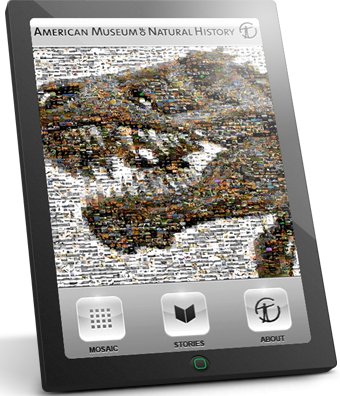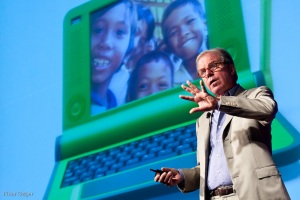Marvell and OLPC team up on Android edu-tablet
Oct 6, 2010 — by Eric Brown — from the LinuxDevices Archive — 3 viewsMarvell will provide the One Laptop per Child (OLPC) Foundation with $5.6 million to fund its next-generation XO-3 tablet, as well to help OLPC develop an interim educational tablet based on Android, says a report. Based on Linux and aimed at developing nations, the OLPC will feature a bendable, dual-mode screen, while the nearer-term device will run Android and is described as a “First World” tablet.
In May, OLPC and Marvell agreed to develop the next-generation OLPC XO-3 tablets based on the chipmaker's 1GHz Armada 610 system-on-chip (SoC). Aimed at the worldwide educational market, the XO-3 devices will support 1080p video encode and decode, 3D graphics, Flash 10-enabled web access, and teleconferencing, and consume only a single Watt, said the partners.

Marvell Moby reference design
"Their [Marvell's] money is a grant to the OLPC Foundation to develop a tablet or tablets based on their chip," Negroponte was quoted as saying. "They've been sponsors all along, but they were one of ten. Now they are the technology partner."
Ma rvell and OLPC will show a prototype of the Android tablet at the Consumer Electronics Show (CES) in January, although it may not be a working prototype, says the story. The tablet will be based on the Moby design (pictured at left and farther above), which offers Wi-Fi, Bluetooth, GPS, an FM receiver, and Adobe Flash compatibility.
rvell and OLPC will show a prototype of the Android tablet at the Consumer Electronics Show (CES) in January, although it may not be a working prototype, says the story. The tablet will be based on the Moby design (pictured at left and farther above), which offers Wi-Fi, Bluetooth, GPS, an FM receiver, and Adobe Flash compatibility.
Moby also features a camera for video-conferencing, multiple simultaneous viewing screens, and Marvell's 802.11n Mobile Hotspot, which allows Wi-Fi access for up to eight concurrent users via a cellular broadband connection. Support is offered for Android, Ubuntu Linux, and Windows Mobile. (For more background on Moby and the OLPC, please see our previous coverage, here.)
The initial Android tablet appears to be aimed at the educational market in the U.S. and other major markets, although it is unclear whether it will be sold commercially as well as directly to schools.
"The first one would definitely not have our brand. It's a First World machine," Negroponte was quoted as saying. Marvell will develop the tablet with the help of OLPC, hardware OEMs, and an educational partner, and release it sometime in 2011, Negroponte told the publication.
The XO-3, meanwhile, will be quite different externally when it arrives in 2012, says the story. It will be made entirely out of plastic, so that it is bendable but unbreakable, and will have a dual-mode display that works indoors as well as in bright sunlight, writes Buderi. (In the past, OLPC has said the device will likely offer a new transflective display from Pixel Qi, a company that spun off from OLPC.)

OLPC's Nicholas Negroponte speaking at GigaOM's Mobilize 2010 with current XO-1.5 netbook in background
Source: GigaOM
Negroponte was said to have referred to this strategy as "a new regime of trying to make things people will copy rather than doing it ourselves." Continued Negroponte, "When I wake up in the morning I ask myself, 'Will normal market forces do what I'm doing today?' — and if the answer is yes, then stop."
The story also noted that OLPC has so far distributed two million XO laptops in 40 countries so far.
Availability
The Xconomy article on Marvell's investment in OLPC may be found here, and the GigaOM story, which was reproduced on OLPC's site here, may be found at GigaOM, here.
This article was originally published on LinuxDevices.com and has been donated to the open source community by QuinStreet Inc. Please visit LinuxToday.com for up-to-date news and articles about Linux and open source.